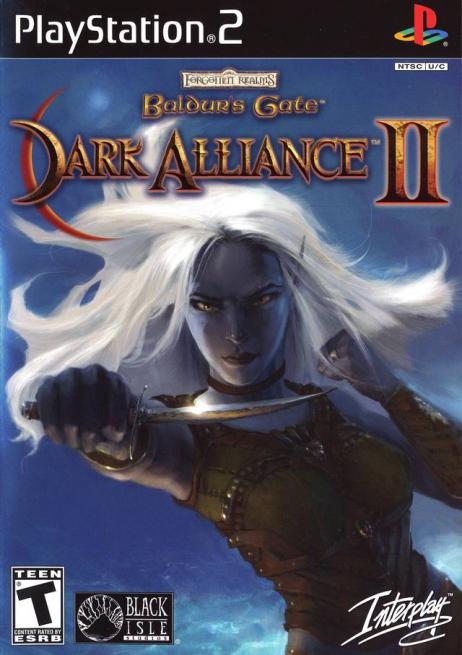Baldur's Gate: Dark Alliance II Review
-
Category: ReviewsHits: 9889

Dark Alliance II is the game that Dark Alliance should have been. It's not so much a sequel as it is a version 2.0 a polished revision of a pretty good first draft. The story is set shortly after the events of the first and involves the rescue of its three heros from a vampire named Mordoc. Truthfully, though, the elements from the earlier story could have been left out entirely, as the plot is pretty much the same: an evil person threatens Baldur's Gate with a tower that can create doors to other planes and you have to stop that person and destroy the tower. You'll go about doing this pretty much the same way you went about it in Dark Alliance, except this time you won't have to buy arrows.
Although the hack and slash mentality of the original game was left intact, Black Isle did made some good attempts at offering a broader RPG experience this time around. The game is still largely linear in nature, but there are chances for each playable character there are five in the sequel to branch off from the main path and take on personal quests. In addition, players can now create their own unique weapons, armor, and jewelry by enhacing exceptional items with gems found out in the field at a workshop.
For those who didn't play the original Dark Alliance, gameplay goes something like this: talk to someone until you get a quest, go to the quest location and kill everything that tries to kill you, go back and get your reward, use your reward to buy new weapons or upgrade the ones you already have. It gets repetitive at times, especially toward the end of the game, but fighting new monsters in each area keeps things fresh and there are some surprises, mostly in the early levels, that prevent your quests from becoming mundane.
Those who played the original Dark Alliance will be happy to know that there are no jumping puzzles and that the tweaked ranged combat system now makes archery a worthwile way to fight. You can now hold in the right trigger button when equipped with a ranged weapon and keep your target line up as long as you want. Since you don't have to buy arrows, you can often mitigate the weaknesses of the static camera by firing off screen to catch enemies unawares. In fact, I used a bow I had upgraded almost exclusively in the early part of the game, until I was able to max out the Unarmed Combat ranks of my dark elf monk.
As far as graphics and sound go, they were both pretty good, but I felt that both had lost something, perhaps because so much concentration was placed on improving gameplay. The graphics were generally strong although the water and fire effects were used more conservatively. I wasn't bothered by that as much as the fact that in some of the landscapes the grass looked like carpet. I also didn't care for the character model of the dark elf, whose portrait made her look like an old woman, or the bizarre way they made her walk when moving through a level.
The music was also generally good, but maybe I've just become so accustomed to it that it fails to register, though sometimes it didn't register for a reason. As with the original Dark Alliance, there are places where the music drops out for a while, which serves to bring a bit of reality to a game about exploring dark caves alone. If it doesn't pick up again before you start fighting, though, it makes the skirmish less cinematic and therefore less purposeful. Along the same lines, the voice acting was pretty strong, but the absence of John Rhys-Davies as Jherek left that character seeming a little flat.
In the end, though, I have to recommend Dark Alliance II, expecially to those who haven't played the original. It manages to make up for almost all of the weaknesses of the former title and offers much more in the way of replay value. In addition to the personal quests that encourage you to play through the game as each character class, you can unlock both Drizzt do'Urden and Artemis Entreri. You can also take all of the playable characters to level 40 and max out their spells and feats along the way. If Dark Alliance was a potential renter, DAII is definitely a keeper and a good example of how console RPGs could begin to offer some of the same role-playing experiences that computer RPGs have been offering for years.


